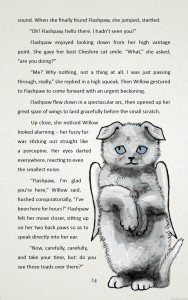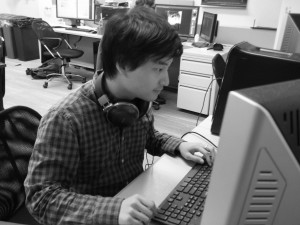Week 10
-
March 23-27
It has come to the point in the semester that we have always feared, but never talked about openly. Yes, drastic times call for drastic measures, and sometimes it becomes necessary within the production timeline of ETC projects to handcuff your artist to her desk. Hannah is being forcibly detained in room 3306 with access to only a tablet and an internet browser with which to peruse Pinterest. We made the decision as a team, and it’s worked out pretty well so far.
Just kidding! But Hannah is working incredibly hard right now to make content for chapter four and finishing up chapter three items. We’re behind at the moment, but we always knew these chapters were going to be the hardest to complete. They’re the longest ones, with most chapters ranging about 10-20 pages, while chapter four came in at 35 (and counting).
We did another playtest this week, and are preparing for our last formal playtest this upcoming Saturday, where we’ll be conducting A/B testing on builds with and without enhancements. On Wednesday, we worked with some incredibly smart fifth graders at Avonsworth Elementary who gave us a lot of useful advice. They asked for things that we already have in the “to-do” queue, which was a great sign that we have an accurate sense of what people expect features will do.
They were so smart, they picked up on almost all of the interaction methods, including touch-to-direct-eyes on a large illustration of Willow. When your touch lands on the page, Willow’s eyes follow you. Despite our best efforts, these features have taken on an element of discovery. Meaning users will spend some time trying to figure out a feature (which is time spent not reading). On the one hand, it does sort of keep with our design – illustrations work in a similar way, where you’re asking the reader to stop and look at them, so it’s not necessarily a problem. However, our ideal design would be for features to show you beforehand how they work; for example, Willow’s eyes are already darting around the page, which theoretically shows users how this feature works.

For the next playtest, Allyn is building a data collection tool to be run concurrently with the book that captures information about what users are interacting with and how long they’re spending on each page. This, accompanied with the reading comprehension survey, will give us lots of great information about the way people use the book.

I’ve got to go now, Hannah is asking for water. Artists, am I right?



